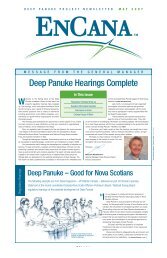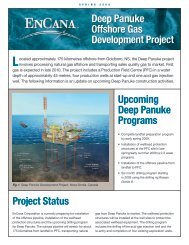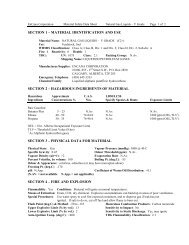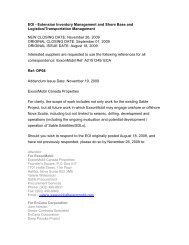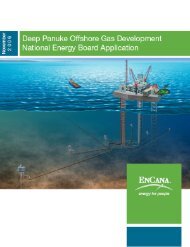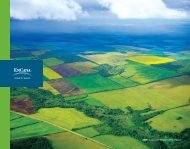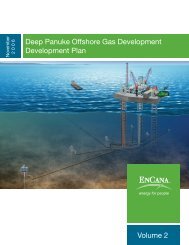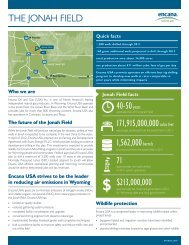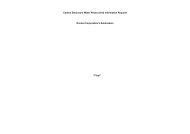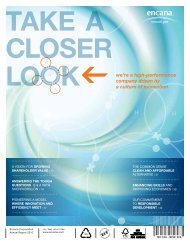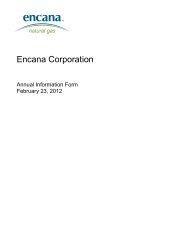Deep Panuke Project Description - Encana
Deep Panuke Project Description - Encana
Deep Panuke Project Description - Encana
You also want an ePaper? Increase the reach of your titles
YUMPU automatically turns print PDFs into web optimized ePapers that Google loves.
2.9.2 Pipeline Leak PreventionThe pipeline design philosophy, in accordance with CNSOPB regulations, incorporates designs for:internal pressure containment; dropped objects protection; fatigue; spanning; and hook, pull or snagloads due to fishing activities. The pipeline will be designed to withstand impacts from conventionalmobile fishing gear in accordance with the Det Norske Veritas (DNV) Guideline No. 13, InterferenceBetween Trawl Gear and Pipelines, September, 1997. During the operational phase, inspections arecarried out as part of the Annual Survey to ensure that the pipeline integrity is maintained.Leak detection for the pipeline will be carried out by the use of mass balancing. This method usesprocess conditions at either end of the pipeline along with gas composition to calculate the mass enteringthe pipeline and exiting it. The M&NP custody transfer meter along with onshore instruments will beutilized to gather flow, temperature and pressure measurements. Similarly on the MOPU, the flow,temperature, and pressure will be used in conjunction with the gas composition to calculate the massentering the pipeline. The onshore measurements along with the offshore gas composition will be usedto calculate the mass exiting the pipeline. The mass entering and exiting the pipeline will be used todetect leaks. The leak detection system will be designed accordingly for the export option selected.In the event that a leak is confirmed, the pipeline has a series of shutdown valves that will isolate thepipeline from the M&NP pipeline and the MOPU to prevent additional hydrocarbons from entering thesystem.2.9.3 Blowout Prevention SafeguardsThere are many safeguards in place to prevent blowouts or uncontrolled releases of hydrocarbons duringthe various stages of a wellbore’s life cycle. The equipment used to drill, complete and workover awellbore is essentially the same regardless of whether it is an injection or production well. Also, there isa separate set of permanently installed equipment that is used during the production or injection phase ofthe life cycle.The objective during the drilling of the well is to provide a wellbore through the selected reservoirinterval in the safest and most efficient manner. Several strings of pipe (casing) are set at increasinglydeeper depths to achieve this goal. The first section of pipe, the conductor, is set to approximately 75 mbelow the seafloor with no well control or blowout prevention equipment. For the next hole section(surface hole), a large diverter assembly is installed on top of the conductor pipe. This provides a meansto divert any shallow gas that may be encountered over the side of the rig in a controlled manner untilthe mud weight can be increased to control the flow. The probability of encountering shallow gas duringthis hole section is unlikely since the rig is positioned to avoid any shallow gas anomalies based on ashallow seismic survey.<strong>Deep</strong> <strong>Panuke</strong> Volume 4 (Environmental Assessment Report)• November 2006 2-58




